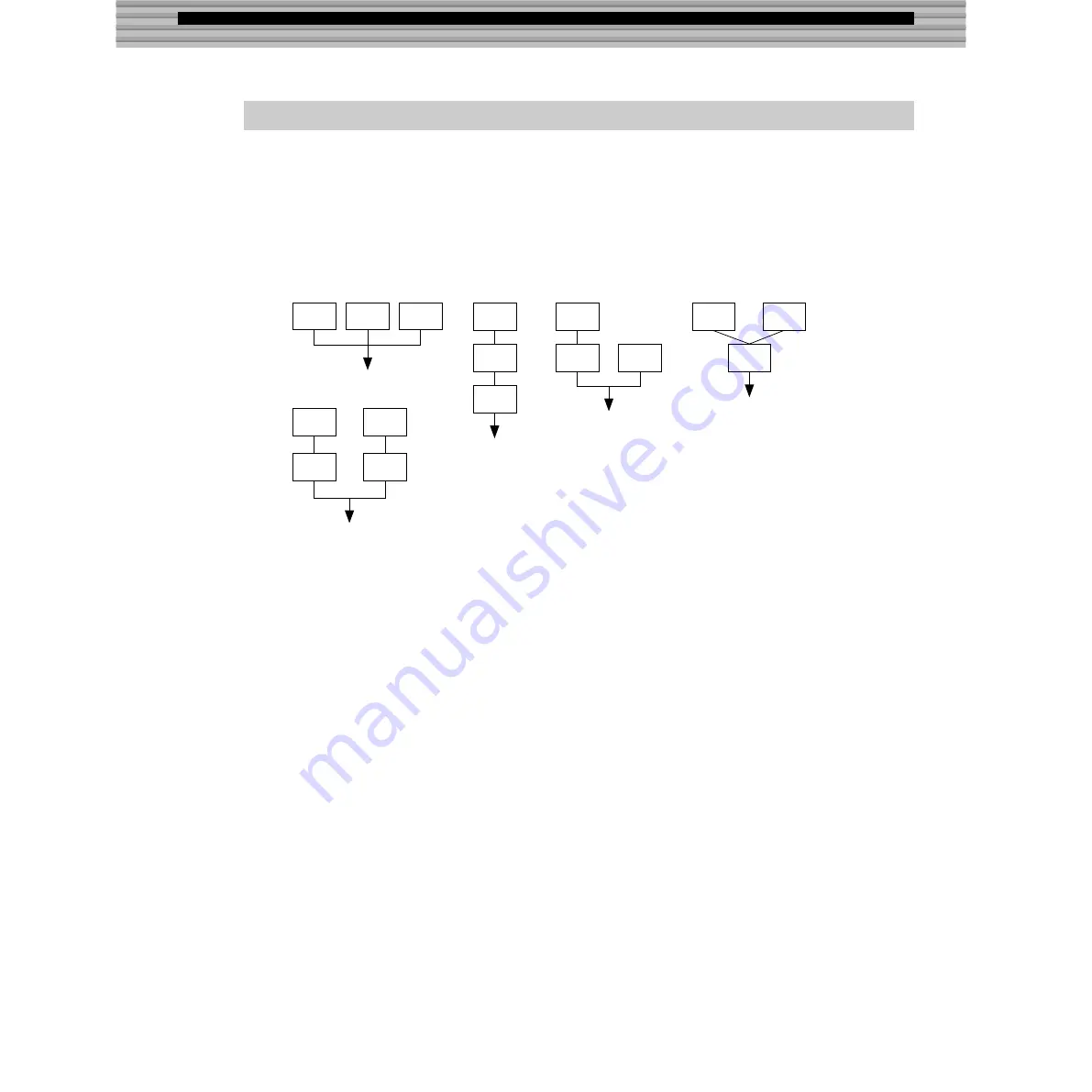
FM Tone Generation
118
Appendix
In FM tone generation, each of the six operators functions as either a carrier or a modulator. The operator
doing the modulation is called the modulator; the one being modulated and delivering the actual sound is
called the carrier. Referring back to “Vertical Combination” on the previous page, operator A is the carrier
and operator B is the modulator.
Let's take a look at some more complex configurations, in which three or more operators are used. Keep in
mind that the modulator/carrier function is the same in all examples.
•
In fig. 1, all operators are combined horizontally and there are no modulators, only carriers. Without
modulation, all carriers output simple sine waves.
•
In fig. 2, three operators are stacked vertically, and only the lowest is a carrier. The top operator modu-
lates the middle one, which in turn modulates the carrier at the bottom. This results in a complex wave-
form, with many harmonics or overtones. (An explanation of harmonics follows on the next page.)
•
In fig. 3, there are two carriers and one modulator. The sole carrier on the right produces a simple sine
wave, while the modulator/carrier pair on the left produce a more complex waveform with added har-
monics. The actual sound is a mix of the two carriers.
•
In fig. 4, two modulators are used change the sound of a single carrier. Using two modulators produces
an even more complex sound than is possible with one, with a greater amount of harmonics.
•
In fig. 5, there are two modulator/carrier pairs, each generating a complex sound with many harmonics.
As with the operators in fig. 3, the actual sound is a mix of the two carriers.
Carrier and Modulator
C
C
C
M
M
C
M
C
C
M
M
C
M
M
C
C
“C” Carrier
“M” Modulator
fig. 1
fig. 5
fig. 2
fig. 3
fig. 4






























